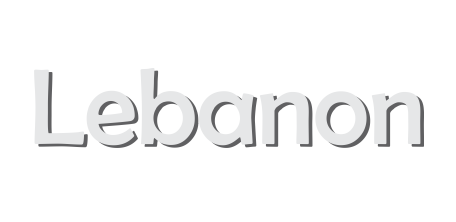
The Turkish Ottoman Empire had ruled over Lebanon since the 16th century until 1920 when a League of Nations authorization gave its control to France, after the World War I. The French rule continued for another two decades. In the meantime, a Lebanese constitution was also framed based on that of France. Finally, on 22 November 1943, Lebanon gained its independence to form its own government and set free from the mandate, hoisting its independent flag.
The national flag of Lebanon was adopted on 7 December 1943. The flag has two red horizontal stripes at the border and in between them is a white band which is double the width of a red stripe. It has a fully green cedar in the middle with its ends touching both the red bands. The cedar symbolizes immortality and steadiness. The two red bands represent the bloodshed during the freedom struggle. The white band symbolizes peace and the white show that covers the mountains extensively spread across Lebanon.
Lebanon is a country located in the Middle East facing the Mediterranean Sea to its west with a coastline of 225 km. Its northern and eastern borders are shared with Syria which has a length of 375 km, and to its south is Israel which has a common borderline of 79 km. The total area of the country is 10,400 sq. km. Most of the country’s land is covered with the mountain ranges. The Lebanon Mountains run parallel to the Mediterranean coastline almost for the entire length of the country. On the other side, there is the Anti-Lebanon Range extending throughout its eastern boundary. Between these two ranges is the Bekaa valley which is also a major agricultural land for the country.

The life in Lebanon is mostly influenced by the long reign of western countries. The culture is a result of cross culture of various civilisations. With a direct eye-contact, men shake hands for greetings and women often ‘kiss in the air’ while rubbing their cheeks with each other.

Guests are offered tea or coffee as a part of hospitality. In case a person is invited to a meal, the guest is supposed to go along with flowers, a plant, a special dessert and something for the home. Lebanese people enjoy having Turkish coffee over some good conversation with some good food, in leisure time. Some of the most famous traditional foods are kebbe which is a dish of lamb and crushed wheat, and tabbouleh which is a salad of parsley, mint, tomatoes and crushed wheat. Any Lebanese meal usually starts with a dish which is a combination of salad and nuts, known as mezze. Lebanon has the cultures carried forth from different nations who lived there for hundreds of year, whether they are Phoenician, Roman, Islamic, Ottoman Turkish, Greek and French.
People who live in Lebanon are called Lebanese. The ethnic groups of the majority of the people in Lebanon are Arabs, few percentages of Armenians and some French and English. The major religions followed over here are Islam, which covers most of the population, and Christianity. Arabic is the official language but other widely spoken languages are English, French and Armenian. Though there is diversity, they all come together from villages and cities during the festivals, celebrating with the traditional folk music and dance.

The Lebanese traditional music of Lebanon is inspired from a mixture of cultures and since the Arabic population dominates the country, it has more influence of Arabic music. It uses certain instruments such as lute, a hand-drum which has a conical shape made of earthenware or metal, a ney and a daf. The national dance of Lebanon is ‘dabke’. It is a widely performed energetic folk dance. The performers dance to a rhythmic beat pounding the feet on the ground. The theme of this dance is always related to the village life and that is why the performers always wear traditional Lebanese dress.



